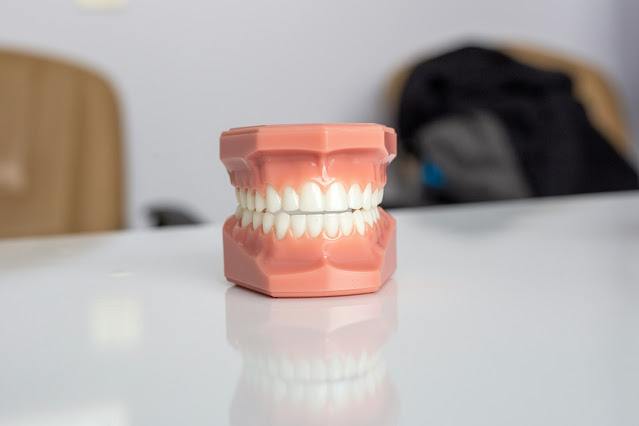The human smile is a universally recognized symbol of warmth, happiness, and connection. Yet, smiles, along with the structures that support them, are remarkably vulnerable to a variety of mishaps that dent the canvas of our visage. When it comes to mouth trauma, the repercussions can be more than skin-deep; they can cut to the core of a person's self-esteem and quality of life.
In this comprehensive guide, we'll explore the various facets of recovering from mouth trauma, how to be proactive about your oral recovery, and what role you can play in securing the healing of your most valuable feature — your smile.
Understanding Mouth Trauma and Its Impact
Mouth trauma encompasses any injury to the oral cavity, including the cheeks, lips, tongue, and teeth. These injuries can occur as a result of accidents, sports-related incidents, physical altercations, or even from munching through a particularly tough morsel.
The Ripple Effect of Oral Injury
Beyond the immediate pain, mouth trauma can have lasting effects. It may lead to difficulties speaking or eating, aesthetic changes, and even impact our mental well-being. Rapid recovery is not just about treating the immediate physical wounds but also about mending the emotional scarring that can occur.
Common Causes of Oral Injuries
Understanding how these injuries occur can often help in preventing them. Falls, especially among the very young and the elderly, are a frequent cause, as are impact injuries from items like furniture and car doors. Sports, especially contact sports, carry a high risk of dental injury if protective equipment is not used properly or at all.
Immediate Response to Mouth Trauma
Swift action in the face of mouth trauma can make all the difference. The actions taken in the moments following an injury can significantly affect the success of recovery.
Assessing the Extent of the Injury
The first step is to assess the situation and ensure that the injured person is out of harm's way. Check for any urgent health concerns, and if the injury is severe, seek immediate medical attention.
Managing the Injury Site
For cuts and broken teeth, it's crucial to stop the bleeding and prevent infection. This involves cleaning the wound and applying pressure to stop the flow of blood.
Preserving Knocked-Out Teeth
When teeth are knocked out, they can still be saved if the right steps are taken. The knocked-out tooth should be handled carefully, avoiding the root, and transported to a dentist in milk or saliva to potentially re-anchor it properly.
Seeking Professional Dental Care
The next crucial step is to seek professional dental care. Dental professionals are trained to address and assess oral injuries, and their prompt, expert intervention can often save teeth and expedite recovery. There are instances when the expertise of an oral surgeon in West Jordan may be required to address severe oral injuries.
The Importance of Immediate Evaluation
Prompt evaluation by a dentist can provide critical early intervention. Whether it'sthe stabilization of a knocked-out tooth or treatment for a fractured bone, swift attention is key to preventing complications and expediting recovery.
Treatment Options for Various Injuries
Different injuries require different treatment approaches. Fractured teeth might be treated with bonding, veneers, or even root canals if the damage extends to the pulp. Cuts and lacerations might require sutures or specialized techniques for proper healing.
Beyond Just the Teeth
Recovery from mouth trauma isn't just about teeth. Lacerations to the lips and tongue are carefully sutured to restore function and minimize scarring. Dislocated jaws might require surgery to reset and stabilize the joint.
Long-Term Recovery and Oral Health Maintenance
After the initial treatments, long-term care becomes the focus. This phase is critical in ensuring that the recovery is complete and that the patient can return to a normal, healthy life.
Supporting Healing through Nutrition
A balanced diet rich in vitamins and minerals is essential for oral healing. Foods high in protein, like lean meats and legumes, can aid tissue repair. Calcium and Vitamin D are important for bone regeneration, and Vitamin C supports the body's healing processes.
Lifestyle Choices and Recovery
Certain lifestyle choices can either support or hinder healing. Avoiding tobacco and alcohol can greatly improve recovery outcomes, as these substances can impair healing and lead to further complications.
The Role of Oral Hygiene in Healing
Maintaining good oral hygiene is crucial during recovery, even though it may be challenging. Special care must be taken to avoid the injured areas but neglecting hygiene can lead to infection or other complications.
Emotional and Psychological Recovery
Mouth trauma can be harrowing, not just physically, but emotionally too. The impact on an individual's self-esteem and confidence can be profound, especially if the injury has a visible effect on the smile.
Coping with Anxiety and Fear
The fear of dental treatment is common, especially after a traumatic dental experience. Seeking supportive dental professionals and relying on family and friends for emotional support can mitigate these fears and anxieties.
Supporting Mental Well-being
Recognizing the mental health aspect of oral injuries is vital. Seeking professional counseling or therapy can help in processing the traumatic experience and its emotional ramifications.
Conclusion
In conclusion, recovering from mouth trauma is a multifaceted process that requires both medical intervention and personal engagement. By understanding the immediate response required, the importance of professional care, and the pathways to long-term recovery, individuals can set themselves on the path to healing. So, whether it's a chipped tooth from an unlucky fall or a more severe injury, know that recovery is possible with the right approach.

